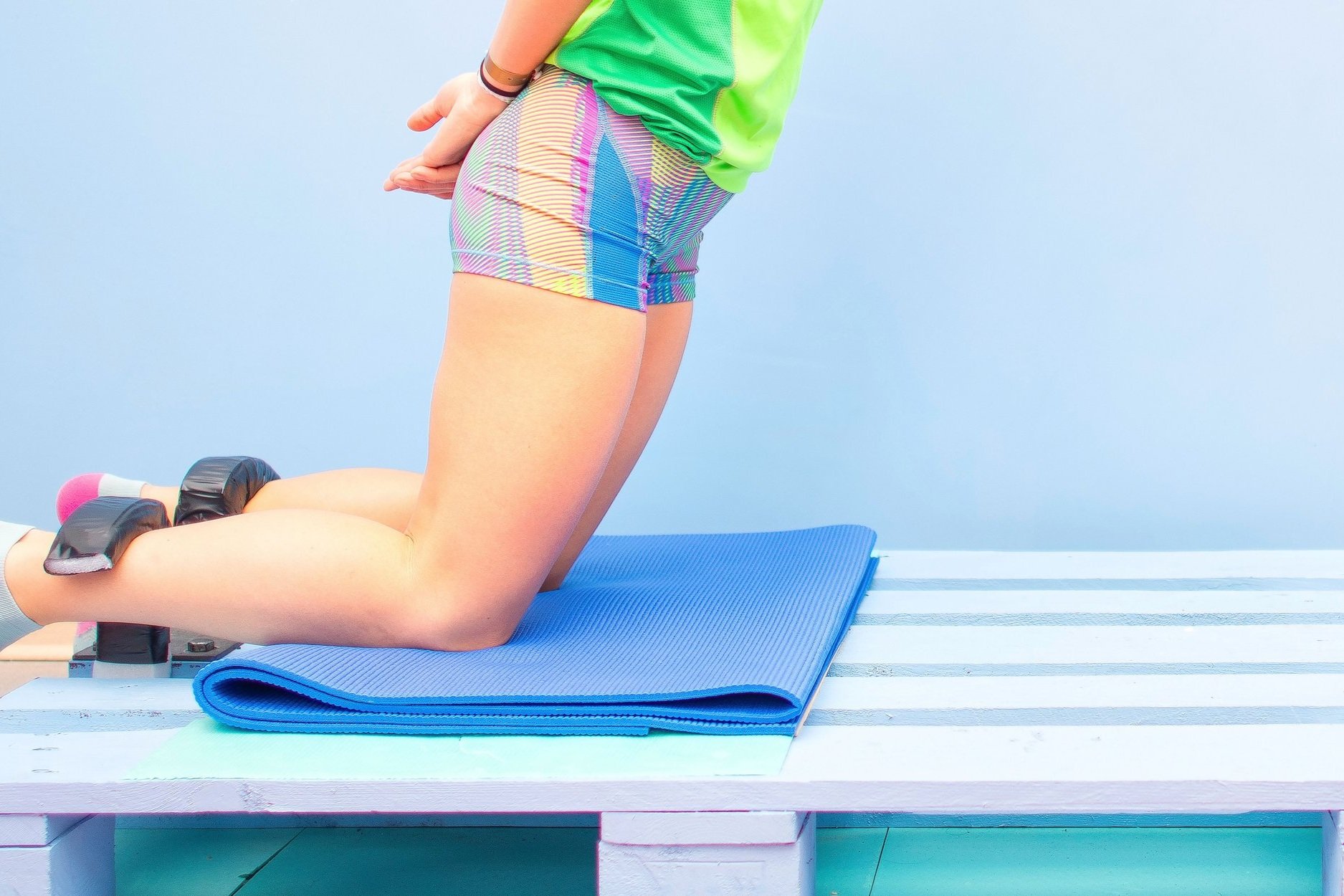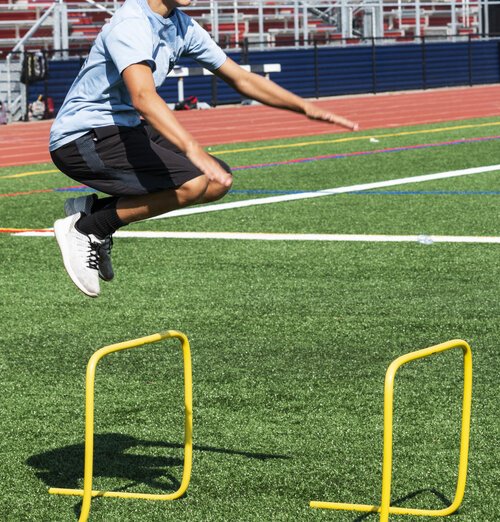Strength and Conditioning
Free articles and resources discussing strength and conditioning strategies for coaches.
Weight training is more than just lifting heavy, it plays a vital role in the long-term development of young athletes. This review examined 20 studies published between 2010 and 2023, exploring how structured weight training influences strength, power, performance, and injury prevention in children and adolescents. The evidence is clear: when delivered with proper technique, progressive overload, age-appropriate exercises, and professional supervision, weight training not only builds stronger athletes but also protects them from injury.
Sprint technique depends not only on correct movement patterns, but also on whether the athlete has the strength and coordination to execute them effectively.
Physical preparation gives athletes the foundation to express speed. It underpins technique, protects against injury, and unlocks sprinting potential. For teenage sprinters, a long-term, well-structured strength and conditioning plan is essential, beginning with general athleticism and becoming more specific as the athlete matures.
What You Need to Know About Resisted Sprint Training.
Discover how resisted sprint training can transform your athletes’ acceleration, sprint mechanics, and explosive power. This evidence-based guide covers optimal resistance loads, distances, sets, reps, periodisation strategies, and the best tools for sprinters.
Tendons are the unsung heroes of athletic performance—acting as biological springs that store and release energy to enhance movement efficiency, power, and resilience. While muscle strength often takes centre stage in training, optimising tendon properties can be the key to unlocking new levels of performance and reducing injury risks across all track and field disciplines.
This article delves into the science of tendon adaptation, exploring how plyometric and resistance training influence tendon stiffness and compliance. Backed by cutting-edge research, it provides practical coaching insights, including targeted training interventions, recovery considerations, and the ideal balance between stiffness and elasticity for different event demands.
The squat—every athlete’s best friend and worst enemy. When done right, it builds explosive power, stability, and strength. When done wrong, it’s a fast track to imbalance, inefficiency, and potential injury. In this guide, we break down squat mechanics using a bottom-up approach, helping track and field coaches identify and correct common faults. From heels lifting to knees caving in, we provide practical cues and strategies to keep your athletes squatting safely and effectively. Whether you're coaching sprinters, jumpers, or throwers, this article will ensure their squats are working for them, not against them.
Welcome to the wonderfully explosive world of plyometrics—a training tool that’s been around since Russian athletes were wearing tracksuits you could hear before you saw. Plyometrics, or “jump training,” is a must-have in any track and field coach’s toolbox. Whether you’re coaching sprinters, jumpers, throwers, or even endurance athletes, this form of high-intensity exercise bridges the gap between raw strength and sport-specific power.
Here’s your quick guide to implementing plyometric training with a pinch of practical advice.
This article explores key benefits, effective techniques, and tailored session plans for both sprinters and distance runners of pool running. Whether you're looking to maintain fitness, build resilience, or introduce low-impact conditioning, this comprehensive overview will show you how to integrate pool running seamlessly into your training programs.
Static stretching is widely used to improve flexibility. But there are no clear recommendations on the optimal amount required. Our new research examined how long, how hard and how often you need to stretch to improve your flexibility – it’s probably less than you expect.
The Functional Movement Screen (FMS) is a tool for evaluating an athlete's functional movement patterns. In this article, we break down how the FMS works, assess its effectiveness in identifying movement inefficiencies and asymmetries, and why it may be a useful addition to your coaching toolkit.
Read this academic article, published in the journal Advances in Physical Education, examining the importance of hip mobility and flexibility for track and field athletes. The article presents a program of nine mobility exercises and six flexibility exercises, with accompanying images, intended to improve hip range of motion and athletic performance.
Knowledge of muscle fibre types and how they can change is valuable for personalising training programs for different athletes’ goals. Understanding how different training modalities affect fibre type composition can help tailor programs for endurance, strength, power, or a combination of these qualities.
This article explores updated guidelines for incorporating eccentric exercises into training programs, focusing on both developing and senior athletes. Key exercises like Nordic Hamstring Curls, Eccentric Squats, and Flywheel Leg Press are broken down with recommended sets, reps, and frequency. Backed by the latest research, these guidelines provide coaches with practical, science-based strategies to maximise performance while reducing injury risk.
This presentation by Angus McEntyre, titled "Strength Training for Higher Performing Track & Field Athletes", provides a comprehensive guide for coaches on how to implement effective strength training programmes. The key theme revolves around the concept of "Developing Athleticism" by tailoring programmes to individual athletes and their specific events. The presentation stresses the importance of conducting thorough athlete assessments considering factors like training age, injury history, and individual needs.
Listen and read a summary of his presentation here.
No-load interventions, such as motor imagery, contralateral limb training, and passive blood flow restriction (BFR), offer effective methods for maintaining or improving strength without physical equipment or placing undue stress on an injured limb. Motor imagery, which involves mentally rehearsing exercises, has been shown to preserve and even slightly enhance muscle strength, making it useful during periods when physical training is not possible, such as during injury recovery, holidays, or travel to challenging environments.
The area of strength and conditioning has historically been lacking in the training programs of our potentially elite middle and long distance athletes. As a result, many of them are breaking down because they are not musculoskeletally strong enough to cope with high mileage or are burnt out because they are bored with training before they have a chance to achieve anywhere near their potential.
In this article, Di Huxley explores why and how strength and conditioning training should be incorporated for middle and long distance athletes.
Training frequency is considered an important variable in the hypertrophic response to regimented resistance exercise. The purpose of this paper was to conduct a systematic review and meta-analysis of experimental studies designed to investigate the effects of weekly training frequency on hypertrophic adaptations.
Discover how adding a set of drop jumps within two minutes of performing a long jump can enchance an athlete's performance in this peer-reviewed research summary.
Plyometric training is a vital tool for track and field athletes, enhancing power and overall performance, particularly in events like the high jump. This article outlines the history, scientific principles, and practical applications of plyometric training, emphasising its significance for coaches and athletes alike.
This table provides a long-term periodization model for strength and gives an overview of the development stages, training method, volume (quantity), intensity (load), and means of training.
Learn from Athletics Australia’s Lead Physiologist, Avish Sharma and Bryce Anderson as they make evidence informed recommendations for when, why, and how altitude training may be incorporated into an athletes’ training plan.
Core strength is a great asset for all Track and Field athletes.
Both traditional and modified plank exercises have been shown to effectively enhance core muscle endurance, strength, and dynamic stability. Check out this plank series that you can use with athletes of any event group.
Find out the basic structure for building out a needs analysis and determining the priorities for your training plan this season.
What can the coach do to ensure that the time the athlete is spending in the weights room is being used most effectively for performance gains? This article looks at how we can select exercises in the gym that have the greatest transfer to sprinting performance.
This article will examine four key research papers on the benefits and sport-specific effectiveness of plyometrics training. We will examine their findings and place the results in the context of the wider peer-reviewed literature and expert opinion on the topic.
This article will explain what is meant by the term ‘Complex Training’, how it may benefit your athletes, and how to implement a complex training session.
Based on the article ‘Progressions of Isometric Core Training’ authored by Mendrin, Lynn, Griffith-Merritt, & Noffal (2016), Loren Landow takes us through the coaching points, progressions, and demonstrations for the exercises found to be the safest and most effective for the development of core strength and stability to improve performance and reduce the likelihood of injury.
Peter Hannan explains common questions about plyometrics and shares exercises that he finds useful for coaching sprinters, hurdlers and jumpers.
Muscles are remarkably powerful… but have have a major performance issue: they can’t produce much force when they’re shortening at high speed. So how is it that we can move so quickly?
Hamstring injuries are one of the most common causes of injury for Track and Field athletes. As coaches, there are a number of different methods we can implement into the training program to reduce the likelihood of injury occurring.
This article will have a look at the evidence and share effective exercises, which you can incorporate into your training.































What if your athletes could get the benefits of heavy lifting without the heavy loads? Blood Flow Restriction (BFR) training is fast becoming a smart tool for track and field coaches — from sprinters and throwers chasing power, to distance runners managing fatigue, to injured athletes on the comeback trail.